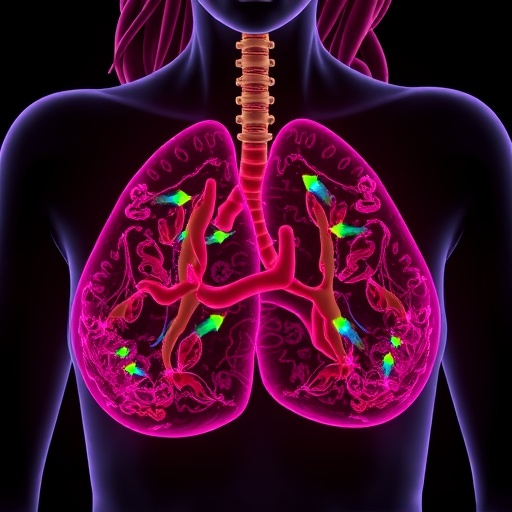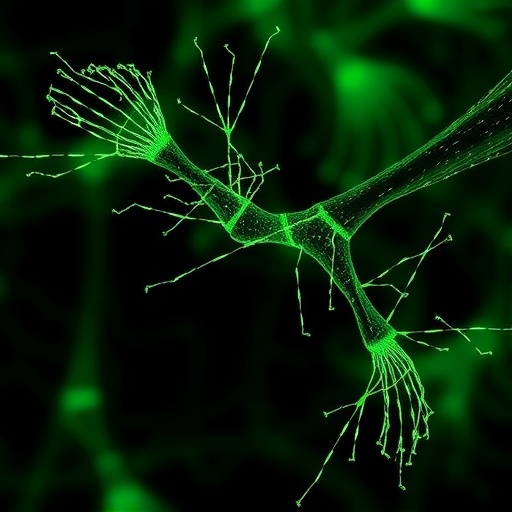In a groundbreaking advance that could reshape the therapeutic landscape for estrogen receptor-positive (ER-positive) breast cancer, researchers have unraveled a novel mechanism that links estrogen receptor signaling to autophagic regulation, opening new avenues to intensify the sensitivity of cancer cells to oxidative and radiation-induced stress. This breakthrough study reveals how targeting ESR1—the gene encoding estrogen receptor alpha (ERα)—can restore a critical autophagic pathway mediated by p62/SQSTM1, effectively remodeling the cellular stress response network in ER-positive breast cancer cells.
ER-positive breast cancer represents a significant subset of breast cancer diagnoses globally, distinguished by its reliance on estrogen receptor signaling to drive tumor growth and survival. Despite advances in endocrine therapies, resistance mechanisms inevitably emerge, leading to therapeutic failure and disease progression. This new research identifies a previously underappreciated link between ESR1 activity and autophagy—a catabolic process essential for maintaining cellular homeostasis and stress tolerance—demonstrating that ESR1 exerts a suppressive control over p62/SQSTM1-dependent autophagy pathways in these tumor cells.
The autophagy receptor protein p62/SQSTM1 serves as a nodal regulator for selective autophagy, facilitating the degradation of ubiquitinated proteins and damaged organelles. Importantly, p62 is known to influence oxidative stress responses by mediating the turnover of pro-oxidant proteins and promoting cellular adaptation to stress. The study illuminates how suppression of ESR1 augments p62 expression and functionality, leading to a resurgence of autophagic flux. This process heightens cellular cleanses of oxidative damage and misfolded proteins, thereby sensitizing cancer cells to exogenous challenges such as reactive oxygen species and ionizing radiation.
Methodologically, the team employed an integrative approach combining molecular genetic techniques, cellular assays, and in vivo models to dissect the ESR1-p62 autophagy axis. By knockdown or pharmacological inhibition of ESR1, researchers observed restored autophagic activity in ER-positive breast cancer cell lines, accompanied by increased vulnerability to oxidative stress and radiotherapy-induced cytotoxicity. Conversely, enforced ESR1 expression attenuated autophagy, underscoring the receptor’s suppressive role in these pathways.
From a therapeutic perspective, this discovery unveils ESR1 as a dual-function target—beyond its canonical transcriptional regulation of proliferative genes, its modulation appears pivotal in orchestrating autophagy-mediated stress responses. This insight challenges established dogma, suggesting that endocrine therapies could be optimized or combined with autophagy-modulating agents to overcome resistant phenotypes and enhance treatment efficacy. Such combination strategies could achieve higher rates of tumor cell eradication by synergistically impairing adaptive survival mechanisms.
The intricate interplay between ESR1 signaling and autophagy impacts how ER-positive breast cancer cells navigate oxidative onslaughts, a situation commonly encountered during radiation therapy. Radiation generates high levels of reactive oxygen species (ROS), which induce DNA damage and cellular apoptosis; however, cancer cells frequently deploy autophagy to mitigate these insults, fostering radiotherapy resistance. By reinstating p62-dependent autophagy, ESR1 inhibition disrupts this protective shield, rendering cancer cells more susceptible to ROS-mediated apoptosis and improving overall treatment outcomes.
Additionally, the results elucidate the molecular cascades downstream of ESR1 that converge on autophagic machinery, including the modulation of key autophagy-related genes and signal transduction pathways. The study highlights the complex regulatory network where estrogen receptor influences autophagy markers such as LC3 and ATG proteins through transcriptional and post-translational mechanisms, aligning cellular catabolic processes with hormone receptor status and environmental stressors.
Importantly, the translational potential of this work extends to the clinical realm. The findings advocate for the development of next-generation ESR1 inhibitors with enhanced specificity for autophagy pathway restoration. Moreover, biomarkers related to p62/SQSTM1 expression and autophagic flux could serve as predictive tools for identifying patients likely to benefit from combined endocrine and autophagy-targeted therapies, paving the way for precision oncology approaches.
This paradigm-shifting research also prompts reevaluation of current therapeutic algorithms by integrating autophagy modulation as a cornerstone in managing ER-positive breast cancer. It calls attention to the balance between endocrine resistance mechanisms and cellular quality control systems, suggesting a synergistic vulnerability that could be tactically exploited. The prospect of overcoming radioresistance through autophagy reactivation offers a promising strategy to enhance the curative potential of combined modality therapies.
While this study primarily focuses on ER-positive breast cancer, the mechanistic insights into ESR1’s role in autophagy may have broader implications across hormone-driven malignancies. Future research is encouraged to explore whether similar autophagy regulatory networks exist in other estrogen-responsive cancers such as endometrial or ovarian tumors, potentially extending the impact of these findings beyond breast cancer.
In-depth molecular analysis revealed that ESR1 signaling dampens p62/SQSTM1 transcription and impairs its functional interactions with ubiquitinated cargo, which are critical for selective autophagy initiation. Reversing this repression through ESR1 targeting releases autophagic inhibition, facilitating enhanced clearance of cellular debris and promoting apoptotic cascades under stress conditions. Such mechanistic clarity strengthens the foundation for rational drug design aimed at modulating this axis.
Moreover, the study underscores the dynamic nature of cancer cell adaptation, whereby hormonal signaling pathways intersect with intracellular degradation systems to fine-tune survival responses. This crosstalk provides a fertile ground for discovering vulnerabilities unique to cancer cells, distinct from normal tissue counterparts, thereby minimizing off-target effects and improving therapeutic index.
The authors advocate a multidisciplinary approach to further refine ESR1-autophagy interactions, including protein structural studies and in vivo imaging of autophagic flux in clinical samples. These efforts will be crucial to translate preclinical observations into robust clinical interventions that can improve patient survival and quality of life in ER-positive breast cancer.
Ultimately, by charting a previously uncharted territory between estrogen receptor function and autophagy regulation, this seminal study sets a new standard for innovative cancer research. It challenges the research community to rethink existing biological paradigms and leverage molecular synergies for designing next-generation cancer therapeutics tailored to the complex biology of hormone-responsive tumors.
In conclusion, the restoration of SQSTM1-dependent autophagy through precise targeting of ESR1 constitutes a highly promising therapeutic strategy to sensitize ER-positive breast cancer cells to oxidative and radiation stress. This insight not only deepens our understanding of breast cancer biology but also offers an exciting clinical translational opportunity that could significantly improve outcomes for patients battling this prevalent and often formidable disease.
Subject of Research: Restoration of SQSTM1-dependent autophagy via ESR1 targeting in ER-positive breast cancer and its impact on sensitization to oxidative and radiation stress.
Article Title: Targeting ESR1 restores SQSTM1-dependent autophagy and sensitizes ER-positive breast cancer to oxidative and radiation stress.
Article References:
Yang, YF., He, ZJ., Kuo, HH. et al. Targeting ESR1 restores SQSTM1-dependent autophagy and sensitizes ER-positive breast cancer to oxidative and radiation stress. Cell Death Discov. 11, 451 (2025). https://doi.org/10.1038/s41420-025-02755-8
Image Credits: AI Generated
DOI: https://doi.org/10.1038/s41420-025-02755-8
Tags: autophagy regulation in cancercancer cell adaptation to stresscellular stress response pathwaysER-positive breast cancerESR1 gene targetingestrogen receptor signalingnovel breast cancer therapiesoxidative stress in tumorsp62/SQSTM1 functionradiation sensitivity in breast cancerselective autophagy in cancer cellstherapeutic resistance mechanisms






